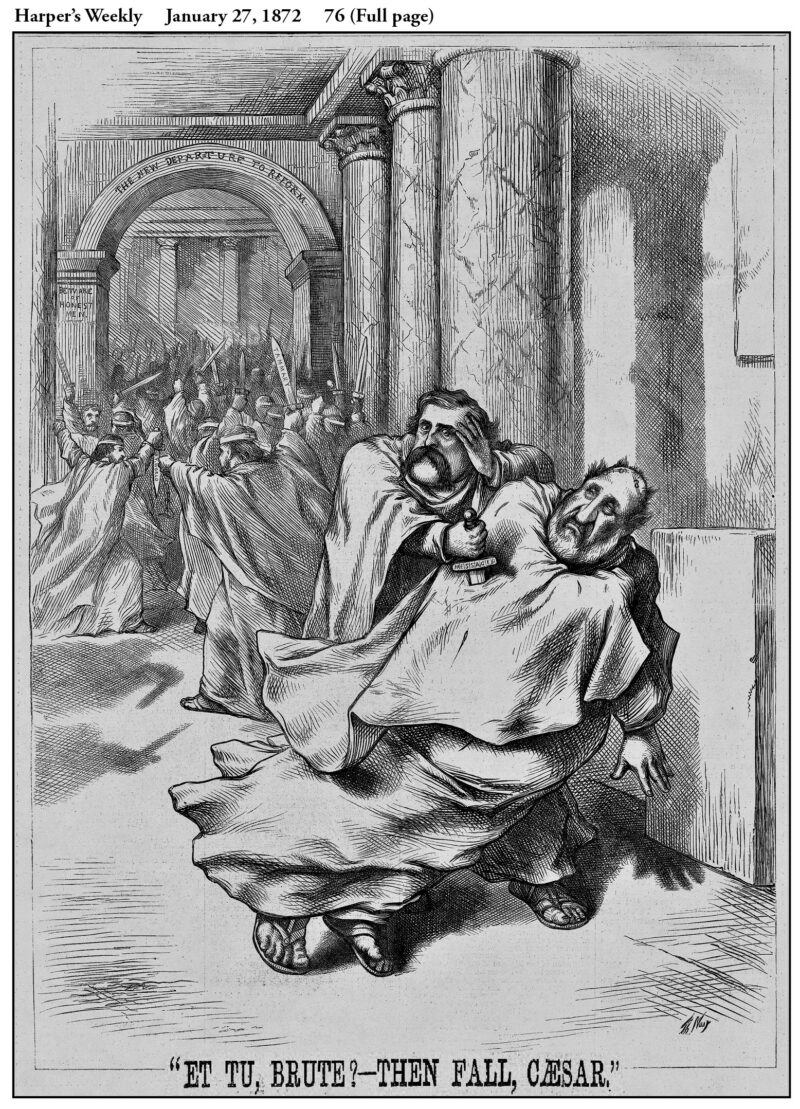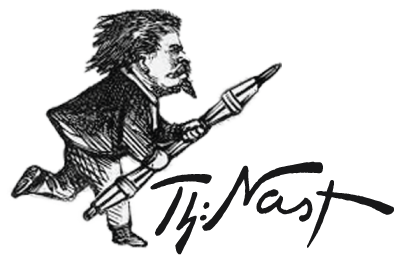
Harper’s Weekly – January 27, 1872
Two months after Boss Tweed was beaten in the 1871 election, Nast depicted his frontman, Governor John Hoffman killing his proverbial father in a replay of French artist Jean-Léon Gérôme’s Death of Caesar. He probably was stimulated by a current production of Shakespeare’s Julius Caesar with Edwin Booth in the role of Brutus.
Hoffman had just repudiated Tweed in his annual message to the State Legislature, blaming the Ring for abuses of the Charter and for vote fraud. Aiming specifically at Tweed, he declared that anybody obtaining his office by bribery, false counting or illegal voting should be barred from it. Nast quoted at length from Hoffman under his Et Tu, Brute? Then Fall, Caesar caption.
Nast’s central point was to show Brutus/Hoffman delivering a final thrust to his former mentor as he shielded his eyes from Tweed’s face. In the background, a conspiratorial group of born-again reformers — including Tammany’s ultimate successor, John Kelly, and publishers Manton Marble (World) and James Gordon Bennett, Jr. (Herald) fled into an archway. (Both Democratic papers had ignored the Ring’s doings and backed its principals until the public revelations forced them to admit they were wrong.)
A year later, his term expired and, tarnished by his association with the Ring, Hoffman retired from politics and resumed his law practice.
